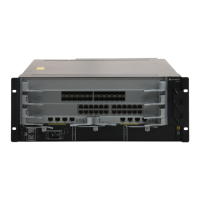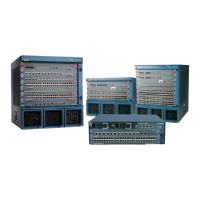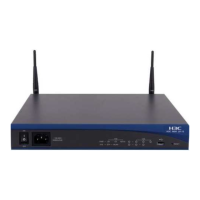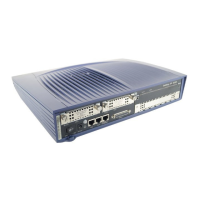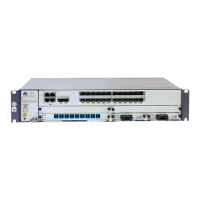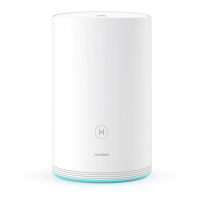Command Manual - QoS/ACL
Quidway S3500 Series Ethernet Switches Chapter 2 QoS Commands
Huawei Technologies Proprietary
2-68
Example
# Redirect packets match the permitted rules in ACL 4000 to the port Ethernet0/1.
[Quidway-Ethernet0/1] traffic-redirect inbound link-group 4000 interface
ethernet0/1
2.3.32 traffic-shape
Syntax
traffic-shape [ queue queue-id ] max-rate burst-size [ queue-depth ]
undo traffic-shape [ queue queue-id ]
View
Ethernet port view
Parameter
queue queue-id: Specifies queue ID, in the range of 0~7.
max-rate: Maximum port rate, in the range of 650~10600000. It must be multiply of 650
kbps.
burst-size: Burst size, in units of kbyte, with the value ranging 4~16000 and being
multiply of 4.
queue-depth: The maximum depth of a queue, ranging from 128 to 2048 and must be
the multiple of 16. If the parameter queue queue-id is not specified in the command,
this parameter is used to specify the queue depth of a port; otherwise it specifies the
queue depth of the corresponding queue.
Description
Using the traffic-shape command, you can enable traffic shaping to transmit packets
at relatively average rate. Using the undo traffic-shape command, you can remove
traffic shaping.
The switch support port-based traffic shaping, that is, running traffic shaping to all the
traffic at a port. For this purpose, you do not select the queue queue-id parameter in the
command. You can also run traffic shaping for a specific outbound queue, i.e. all traffic
in this queue, by selecting the queue queue-id parameter in the command.
It is recommended to configure traffic shaping on all the traffic at the port.

